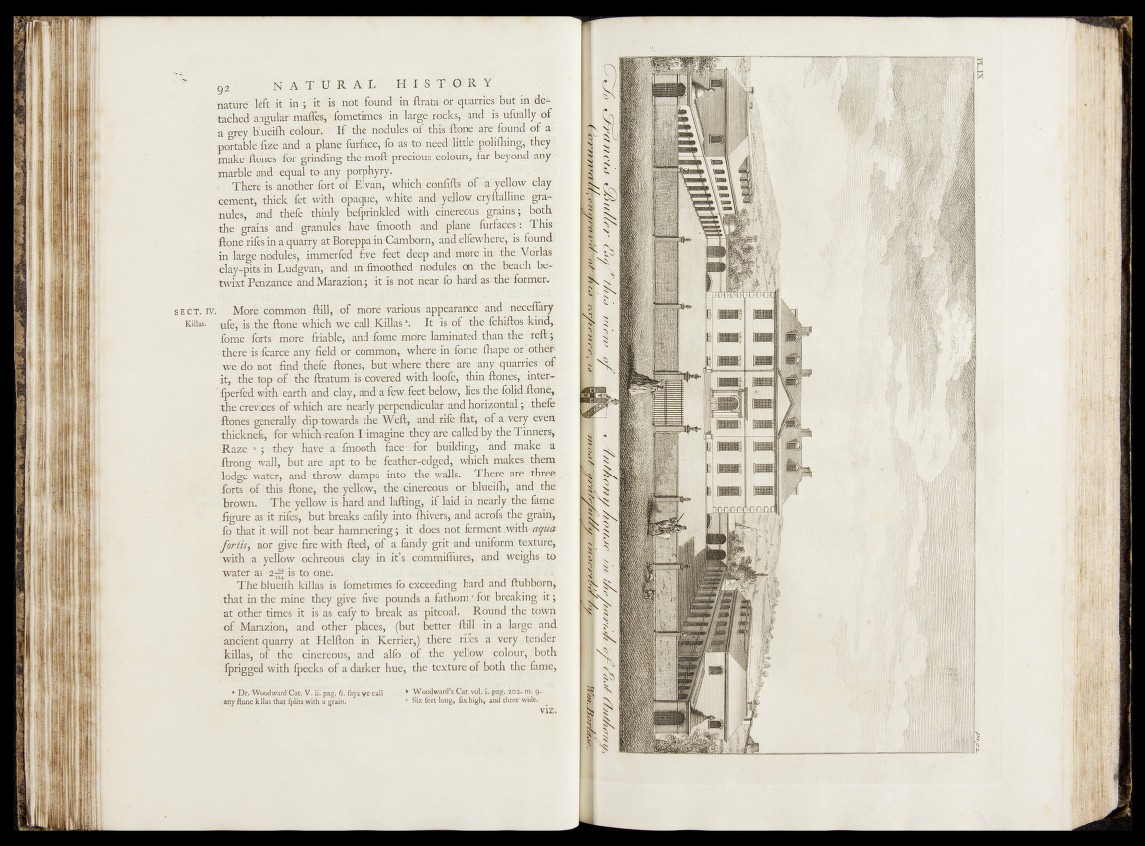
92 N A T "Ü R A L H H^ - 0 R Y
nature left-it in ||iraÉra| not - found ^in ftrata or qrfarrfes-But in de-
;taóhed-^^^.isa^^|6tijéirÈes:' i i^ ^ É ^ ^ è W d ':is' ufu^llj^of
a grey bluéiüi > colótir. - I f 'tlet'rièd'üles of tfi*fe-ftpne*are found ofc|*
:p0ifable?iize' and a’plaüe furface, fo aèto neediittle poHfoöïgythey-'
.mal^fforfes i§ r'grinding the moft> precious colours, fat' beyôhdiainymàrbfeantl
equal to-any -porphyry. ■ ' ‘ ^ ........... -
( - ;TKere;is another-fort óf Elvan, 'which conflits óf-’-a, yëllow-clay
>ti&k-fet with opaque, -white and yejfow$gÿfedlihè- grà-.
niôlés, and- thëfe thinly befprinkled ’"with -cinereous grains ; both
•the grains and granules have frriooth and^ plane •'foffàdes': -This;
ftone rifes in aquany at Boreppa in Càtnborn, and elfewher^S fopndl
ifiifegè;npdülesi immerfed five feet deep and~more in Ïhe;rVórlik
çlay-pits: in Ludgvani, and in finoothed nodules on the.*’ beach be-
twixt Penzance and Marazion ; it is not near, fo hard as .the: former.
sect. iv. More common - Hill, of more various appearance and-necélîary
Killas. nie, .is thte ffone which we call Kallas*. It is».of ‘the fchiftos .kind,
fome forts' more, friable, and fome more laminated than: the refo;
■ there is icarce any field or common, where in fome ihapefor cthi^
:we do not find thefe ftones, butjwhere there' are (any quarries of
-it, the top of the ftratum is covered with- lopfe, thin: ftones,t int^n-
iperfed with earth and clay, and a;few feet below, lies thofi^âiÏQn^,
the crevices of which are nearly perpendicular, and horizontal;; thefe
ftones generally diptowards the Weft, .and! rife, fiât, of.a -Very ‘.even
tViirknefg^ for whichrcafon I imagine they are callecbby (thetiTinnersj
-Raze 6 ; . they have a ' finooth : faqe : :for " .htrilding, and ,'make': 'a
ftrong wall, but are. apt to bg feather-edged,^ ' which makes them
lodge water, and throw damps into the walls. There .aie three
forts of'thisftone, the yellow, -thè cinereous or^blueifh^ and^ the
brown. The yellow is hard and lafong, if laid, in .nearly-the feme
figure as it rifes, but breaks eafily into ftuyersÿand actpfs;the grain,
.fo that it will not bear hammering ; it doeslnot. fermerit -^ndv-oqua
‘forth, nör give fire with Heel, o f a fendy grit and üir&rm' texturê,,
with a yellow ochreous clay in it’s commifiures, and. wfeighs tó
water as 2^ is to one.
The blueifh killas is fometimes fo exceeding hard and ftubborn,
that in the .mine they give five pounds :a -fathom ‘ for breaking
at other times it is as ealy to break as pitcoal. Round the town
.o f Marazion, and other places, (but better foil in a large and
ancient quarry at Hélfton in Kerrier,) thére rifes a very , tender
killas, of the cinereous, and alfo . o f . the yellow .cploqr^. bçth
fprigged with lpecks of a darker hue, the texture of both tHe lame,
* Dr. Woodward Cat. V. ii.pag, 6\ fays we call 1 Woodward’s Cat. vol. i*.pâg.;202»xn. 9 * •
I any ftone killas that fplits with a grain* * Six feet long, fix high, and three wide.
viz.